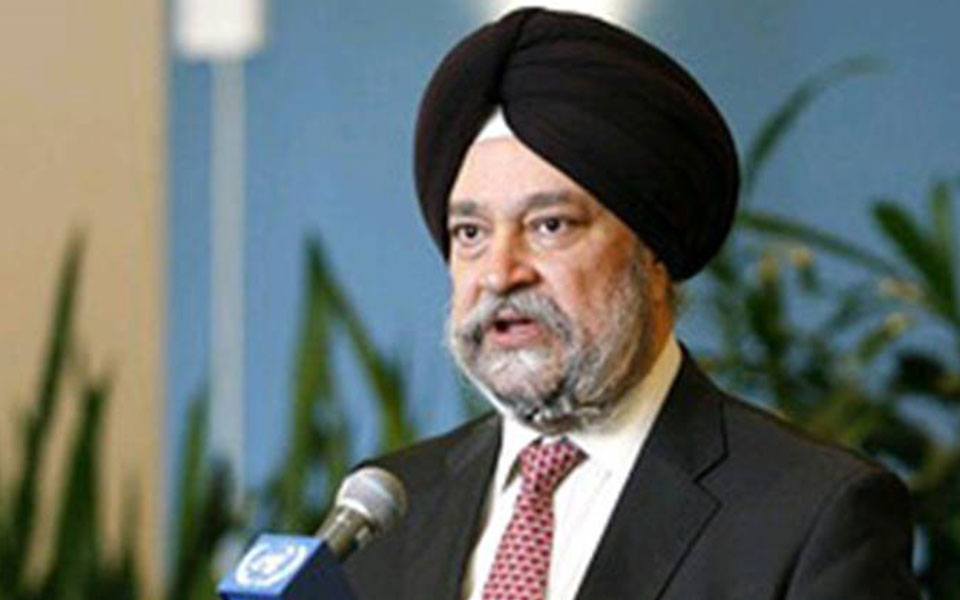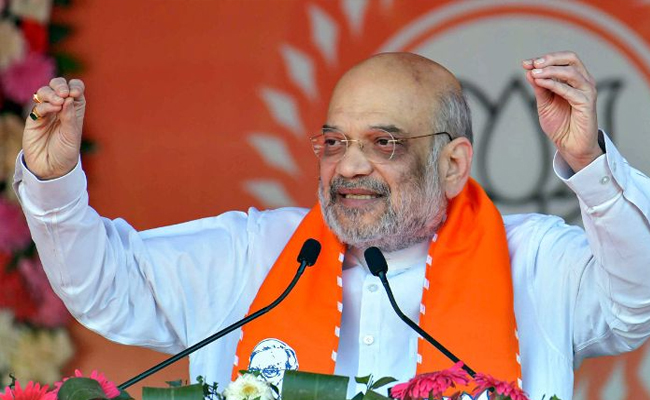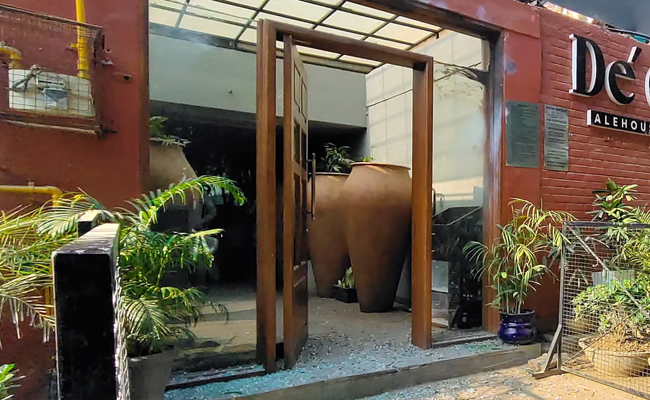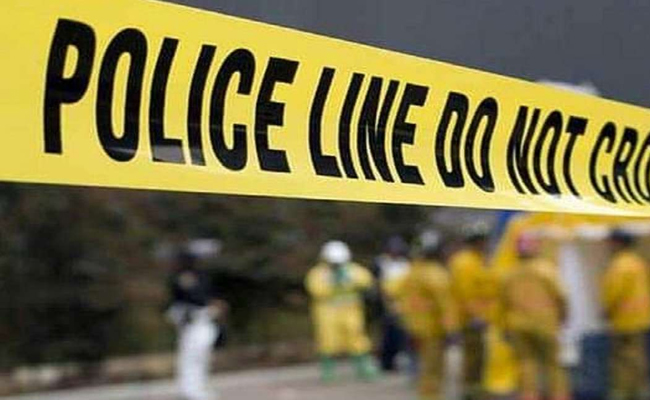New Delhi, June 7: Housing and Urban Affairs Minister Hardeep S. Puri on Thursday said the 99 designated smart cities in the country, which entail an investment of nearly Rs 2 lakh crore, will start showing visible signs of excellence in the next six months.
"This project was announced in 2015 and is due for completion in 2022, but between June and December we will begin to see their physical manifestation and I think that is already obvious," Puri said as he talked on achievements of his ministry in the last four years.
"In the next few days, we are making arrangements to inaugurate the 10th Integrated Control and Command Centre (ICCC). These are cutting edge, state-of-the-art technology centres which integrate all urban services on one huge screen, making it possible to use technology for providing ease of living to all including the disabled, women and children with security features and others," said the minister.
Puri said it takes 15 to 18 months for a smart city project to get underway, as it takes that much time to appoint a project management consultant (PMC) and to establish a special purpose vehicle (SPV). Most of the 99 smart cities already have a PMC and an SPV, he said.
At the time of his joining the Union Council of Ministers in September 2017, the amount of expenditure incurred on the smart cities at that stage was Rs 8,000 crore. "By May 2018, it became Rs 30,000 crore and at the end of December, it would be Rs 50,000 crore," Puri said.
In May, the Madhya Pradesh government launched the country's first cloud-based ICCC for all its seven smart cities. The ICCC would enable the government to monitor and control various citizen services like smart lighting, parking, traffic, waste management and water supply from a single platform.
"I have good basis to believe that another 14 of these ICCCs will be operational very soon," he said.
Of the 99 smart cities, 90 are brownfield projects where smart features are introduced in existing cities.
The total investment proposed for the smart cities is Rs 2,03,979 crore, while 948 projects costing Rs 30,675 crore are under implementation, 399 projects costing Rs 19,190 crore are in tendering stage, and detailed project reports (DPR) are either approved or under preparation for 2,130 projects, costing Rs 1,05,813 crore.
"The NDA government led by Prime Minister Narendra Modi views increasing urbanisation as a challenge and opportunity to bring about a transformative change in the lives of the people," said the Minister.
Further, he said, the government is working on creation of a National Urban Housing Fund (NUHF) of Rs 60,000 crore, to be raised in phases through extra budgetary resources.
Puri said the Ministry is following a three-level strategy.
"At the bottom level, the government is working on poverty alleviation, affordable housing and cleanliness for all 4,041 cities across the country, at the middle level water supply and sewerage is the focus for 500 Amrut cities, having more than one lakh population.
"At the top level, ease of living is addressed in the 100 smart cities with the use of digital technology to improve the urban infrastructure and services," the Minister said.
Comparing 10 years of UPA rule (2004-2014) with four years of NDA's rule (2014-2018), he said the total proposed investment in urban infrastructure was Rs 1,57,703 crore during the UPA rule, while it is Rs 6,85,758 crore during the Modi government.
On Swachh Bharat Mission, he said it has truly become a Jan Andolan (people's movement), as 17 states of the total 35 states and Union Territories are now Open Defectaion Free (ODF), 2,729 cities of the total 4,041 are ODF cities, 48 lakh of the planned 66 lakh individual toilets have been constructed and 3.3 lakh of the planned 5.08 lakh community toilets have been constructed.
On Pradhan Mantri Awas Yojana (PMAY), which envisions pucca house to every eligible urban poor by 2022 and plans to build 1.2 crore houses across the country with basic amenities like toilet, water and power supply, Puri said 47.5 lakh houses have already been approved.
On Real Estate (Regulation and Development) Act, the Minister said 10 states have already established permanent authority and 19 established interim RERA authority.
Talking about urban transport, the Minister said 231 km of Metro projects have been commissioned in the last four years compared to 199 kms in the UPA's 10-year rule.
"Today there are 479 km of Metro systems operational in 10 cities and another about 630 km are under construction," he added.
Let the Truth be known. If you read VB and like VB, please be a VB Supporter and Help us deliver the Truth to one and all.
New Delhi (PTI): The Supreme Court on Tuesday dismissed a petition seeking to revert to ballot paper voting in elections in the country.
"What happens is, when you win the election, EVMs (electronic voting machine) are not tampered. When you lose the election, EVMs are tampered (with)," remarked a bench of Justices Vikram Nath and P B Varale.
Apart from ballot paper voting, the plea sought several directions including a directive to the Election Commission to disqualify candidates for a minimum of five years if found guilty of distributing money, liquor or other material inducement to the voters during polls.
When petitioner-in-person K A Paul said he filed the PIL, the bench said, "You have interesting PILs. How do you get these brilliant ideas?".
The petitioner said he is the president of an organisation which has rescued over three lakh orphans and 40 lakh widows.
"Why are you getting into this political arena? Your area of work is very different," the bench retorted.
After Paul revealed he had been to over 150 countries, the bench asked him whether each of the nations had ballot paper voting or used electronic voting.
The petitioner said foreign countries had adopted ballot paper voting and India should follow suit.
"Why you don't want to be different from the rest of the world?" asked the bench.
There was corruption and this year (2024) in June, the Election Commission announced they had seized Rs 9,000 crore, Paul responded.
"But how does that make your relief which you are claiming here relevant?" asked the bench, adding "if you shift back to physical ballot, will there be no corruption?".
Paul claimed CEO and co-founder of Tesla, Elon Musk, stated that EVMs could be tampered with and added TDP chief N Chandrababu Naidu, the current chief minister of Andhra Pradesh, and former state chief minister Y S Jagan Mohan Reddy had claimed EVMs could be tampered with.
"When Chandrababu Naidu lost, he said EVMs can be tampered with. Now this time, Jagan Mohan Reddy lost, he said EVMs can be tampered with," noted the bench.
When the petitioner said everybody knew money was distributed in elections, the bench remarked, "We never received any money for any elections."
The petitioner said another prayer in his plea was the formulation of a comprehensive framework to regulate the use of money and liquor during election campaigns and ensuring such practices were prohibited and punishable under the law.
The plea further sought a direction to mandate an extensive voter education campaign to raise awareness and importance of informed decision making.
"Today, 32 per cent educated people are not casting their votes. What a tragedy. If democracy will be dying like this and we will not be able to do anything then what will happen in the years to come in future," the petitioner said.





